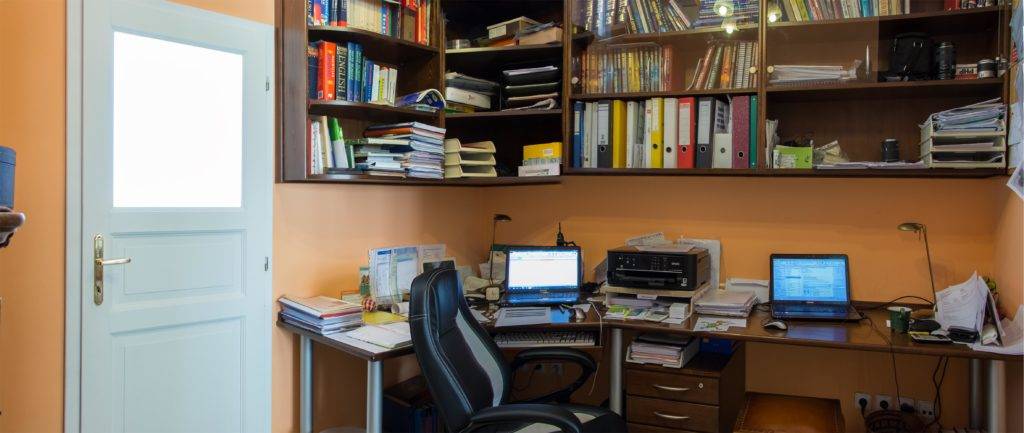
With more people telecommuting at least part of their work week and employers offering flexible staffing schedules, those who want to work at home have to plan beyond employment hours and job duties. If you’re one of these workers, you’ll need a workspace at home that allows you to be as productive as you are at your company’s headquarters.
However, an office in a house is still part of your home. Women often choose to work at home because there are great home businesses for moms that allow them to blend their work responsibilities and busy family lives. By incorporating the best design elements from other parts of one’s house, an office can make a smooth transition from the rest of the dwelling. It can also reflect your personality by adding favorite colors, memorabilia and a style of furniture that suits business needs as well as your personal taste.
Work with the space
Built-in cabinetry can be customized to fit a residential workstation using all the available space from ceiling to floor. Another good idea is to attach a vertical bulletin board the size of a full-length mirror on a side wall. That keeps the post-it notes and paperwork readily available without cluttering the space above the desk.
If you have some some unique architectural elements in the place you’ve chosen for your home office, work around it, advised Houzz. For instance, an office under the eaves of a renovated attic can be outfitted with a collection of cubby holes for storage. Rather than use a standard desk, some spaces can be outfitted more easily with a desk surface held up by filing cabinets.
If the office is located in a bedroom, den or other shared space within the house, it may be possible to turn a double-door closet into an alcove that can fit a narrow desk surface and shelves for supplies and office equipment. With folding doors, the office can be shut away when not in use.
Choose comfortable furnishings
The furniture you choose for a home office should be comfortable and ergonometrically correct if most of your work entails sitting in front of a computer, according to Entrepreneur magazine. The height and angle of your computer, the desk and office chair that you use will help prevent neck and back strain and wrist discomfort that can lead to carpal tunnel syndrome.
The amount of space dictates how large your desk can be, but it’s important to take into account how you work. If you like to spread things out, a flat simple surface may be what you need. For those who like supplies and filing systems close at hand, desktop storage may be more important. Create a working arrangement that will allow you to stay focused, rather than daydreaming while you look out a window at the neighborhood.
Shine the correct light
The lighting you choose will also influence how well you work in your home office. While rooms need a mix of overhead and task illumination, natural light from windows is often the best light to work by. However, direct sunlight or a task lamp that’s shining too brightly could create glare on your computer and become a source of eye strain. Overhead lighting shouldn’t be directly over your computer area.
LED lighting or compact fluorescent bulbs create the least amount of glare on a reading tablet or laptop screen. They also use less energy than incandescent bulbs, emit better light and last longer than traditional bulbs. According to Healthy Computing, a desk lamp should be positioned to the side of the computer screen to prevent glare, but will provide enough light to read documents on your desk.
How did you design your home office? Tell us in the comments or send us a picture on Facebook or Twitter!
